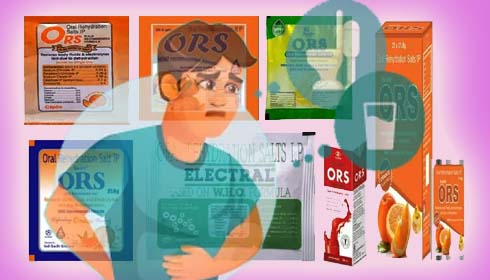
Healthcare providers' assumptions behind underutilisation of ORS in child diarrhoea treatment in India: AAAS study
In a groundbreaking report published by the American Association for the Advancement of Science (AAAS), researchers have uncovered a critical issue surrounding the underutilization of lifesaving treatment for childhood diarrhoea in low- and middle-income countries (LMICs), with a focus on the significant challenges faced in India.
The study highlights that healthcare providers' assumptions about patient preferences a driving force behind the inadequate use of oral hydration salts (ORS), a widely available, highly effective, and low-cost treatment for child diarrhoea.
Despite being the second leading cause of death for children in LMICs, with nearly half a million deaths annually, only a fraction of healthcare providers prescribe ORS, despite being aware of its lifesaving potential.
In India, where almost a quarter of childhood deaths from diarrhoea occur, the situation is particularly alarming, where over 75% of caretakers seek care from private providers, yet a staggering 45% do not receive the recommended ORS treatment.
Indicating that understanding and bridging this "know-do" gap could potentially save millions of young lives, the research, led by Zachary Wagner and colleagues, conducted randomised controlled trials involving 2,282 private healthcare providers across 253 towns in India.
The findings revealed three primary barriers to ORS utilisation as providers assuming patients weren't interested in ORS, financial incentives promoting the prescription of more lucrative but inappropriate medicines, and the inclination to sell non-ORS alternatives when ORS was unavailable.
According to the researchers, expressing a preference for ORS by standardised patients resulted in a notable 27 percentage point increase in ORS prescribing compared to scenarios where no preference was expressed.
They observed that, specifically, when standardised patients did not express a preference, 28% of providers prescribed or dispensed ORS, whereas this figure increased to 55% when standardised patients indicated an ORS preference, marking a significant 96% increase.
“Our findings reveal a critical disconnect between provider perceptions and patient preferences. Providers, on average, believed that only 18% of their patients desired ORS,” they wrote.
“However, household surveys indicated that ORS was the most preferred treatment among patients. This misalignment in perception significantly contributes to the underutilization of ORS, explaining 42% of cases of underprescribing,” researchers added.
Notably, provider perceptions of patient preferences played the most significant role in the underprescribing of ORS, accounting for 42% of cases, though patients who expressed a preference for ORS were twice as likely to receive the treatment.
The study underscores the urgent need for interventions aimed at altering healthcare providers' perceptions to ensure optimal patient outcomes.
By addressing these misconceptions and barriers, the research suggests that the use of ORS could be significantly increased, potentially reducing child mortality from diarrhoea on a global scale.
This revelation is particularly pertinent for India, where targeted efforts could make a substantial impact on improving child health and saving lives.
These insights highlight the urgency of interventions aimed at correcting provider misperceptions. Aggressive exploration of strategies to change providers' understanding of patients' ORS preferences is recommended, as these interventions have the potential to substantially increase the utilisation of ORS.
Targeting patients or caretakers to encourage the expression of ORS preferences during healthcare visits or directly informing providers about the commonality of ORS preferences could prove effective in addressing this critical issue.